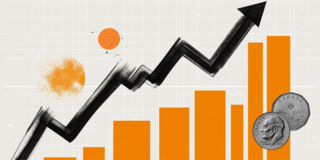USD/CAD strengthens above 1.4100 on tariff pause
|
- USD/CAD rebounds to around 1.4105 in Thursday’s early Asian session.
- Trump announced a 90-day pause on higher reciprocal tariffs on US trading partners.
- The US CPI inflation report for March will be in the spotlight later on Thursday.
The USD/CAD pair recovers some lost ground to near 1.4105 during the early Asian session on Thursday. The US Dollar (USD) edges higher against the Canadian Dollar (CAD) due to US President Donald Trump’s announcement of a 90-day delay on reciprocal tariffs. The US Consumer Price Index (CPI) inflation report will take center stage later on Thursday.
US President Donald Trump said on Wednesday that he authorized a 90-day pause on new tariffs for most US trade partners to 10% to allow trade negotiations with those countries. “The 90-day pause is an encouraging sign that negotiations with most countries have been productive,” said Mark Hackett at Nationwide. “It also injects some much-needed stability into a market rattled by uncertainty.
The Federal Reserve (Fed) officials continue to downplay the immediate impact of a potential trade war on the US economy, preferring to emphasize the data as a key policy driver. Traders are now pricing in only a 40% possibility of a Fed rate cut in next month’s meeting, despite the recent market volatility, according to the CME FedWatch tool.
Traders will take more cues from the US CPI inflation report for March later on Thursday. The headline CPI is expected to show an increase of 2.6% YoY in March, while the core CPI is estimated to show a rise of 3.0% during the same period.
Meanwhile, a recovery in Crude Oil prices could lift the commodity-linked Loonie. It’s worth noting that Canada is the largest oil exporter to the US, and higher crude oil prices tend to have a positive impact on the CAD value.
Canadian Dollar FAQs
The key factors driving the Canadian Dollar (CAD) are the level of interest rates set by the Bank of Canada (BoC), the price of Oil, Canada’s largest export, the health of its economy, inflation and the Trade Balance, which is the difference between the value of Canada’s exports versus its imports. Other factors include market sentiment – whether investors are taking on more risky assets (risk-on) or seeking safe-havens (risk-off) – with risk-on being CAD-positive. As its largest trading partner, the health of the US economy is also a key factor influencing the Canadian Dollar.
The Bank of Canada (BoC) has a significant influence on the Canadian Dollar by setting the level of interest rates that banks can lend to one another. This influences the level of interest rates for everyone. The main goal of the BoC is to maintain inflation at 1-3% by adjusting interest rates up or down. Relatively higher interest rates tend to be positive for the CAD. The Bank of Canada can also use quantitative easing and tightening to influence credit conditions, with the former CAD-negative and the latter CAD-positive.
The price of Oil is a key factor impacting the value of the Canadian Dollar. Petroleum is Canada’s biggest export, so Oil price tends to have an immediate impact on the CAD value. Generally, if Oil price rises CAD also goes up, as aggregate demand for the currency increases. The opposite is the case if the price of Oil falls. Higher Oil prices also tend to result in a greater likelihood of a positive Trade Balance, which is also supportive of the CAD.
While inflation had always traditionally been thought of as a negative factor for a currency since it lowers the value of money, the opposite has actually been the case in modern times with the relaxation of cross-border capital controls. Higher inflation tends to lead central banks to put up interest rates which attracts more capital inflows from global investors seeking a lucrative place to keep their money. This increases demand for the local currency, which in Canada’s case is the Canadian Dollar.
Macroeconomic data releases gauge the health of the economy and can have an impact on the Canadian Dollar. Indicators such as GDP, Manufacturing and Services PMIs, employment, and consumer sentiment surveys can all influence the direction of the CAD. A strong economy is good for the Canadian Dollar. Not only does it attract more foreign investment but it may encourage the Bank of Canada to put up interest rates, leading to a stronger currency. If economic data is weak, however, the CAD is likely to fall.
BRANDED CONTENT
Finding the right broker for your trading strategy is essential, especially when specific features make all the difference. Explore our selection of top brokers, each offering unique advantages to match your needs.
Information on these pages contains forward-looking statements that involve risks and uncertainties. Markets and instruments profiled on this page are for informational purposes only and should not in any way come across as a recommendation to buy or sell in these assets. You should do your own thorough research before making any investment decisions. FXStreet does not in any way guarantee that this information is free from mistakes, errors, or material misstatements. It also does not guarantee that this information is of a timely nature. Investing in Open Markets involves a great deal of risk, including the loss of all or a portion of your investment, as well as emotional distress. All risks, losses and costs associated with investing, including total loss of principal, are your responsibility. The views and opinions expressed in this article are those of the authors and do not necessarily reflect the official policy or position of FXStreet nor its advertisers.